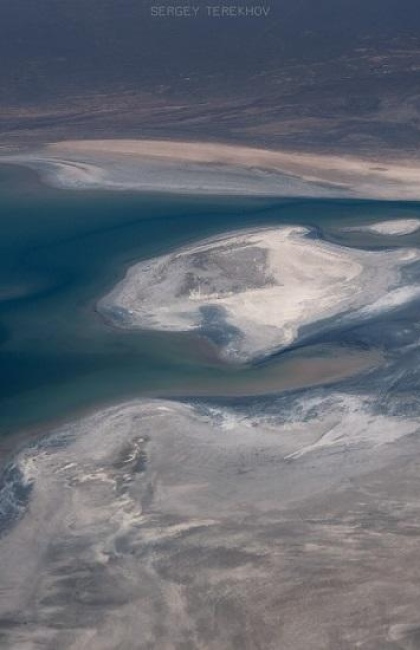Kerderi Mausoleum
A Forgotten Settlement Emerges
The Kerderi Mausoleum was uncovered at the bottom of the Aral Sea after it had become shallow. Scientists have determined that it was built between the 10th and 14th centuries, during the Mongol invasion and the peak of the Golden Horde. This discovery was significant as it confirmed that the Aral Sea had experienced periods of shallowness before. Research indicates that the water level began to rise at the end of the 16th century when the Amudarya River changed its course, possibly flooding the Kerderi Mausoleum around that time. For centuries, the mausoleum lay submerged at a depth of 20 meters (66 ft).
Not far from the mausoleum, archaeologists discovered a settlement with remains of residents and livestock scattered over a large area, suggesting a sudden flood that left no time for escape. Household items were also found, preserved under layers of water and sand for centuries. The settlement's historical name is unknown, but scientists have called it Aral-Asar. It is located 4.5 kilometers (2.5 mi) southeast of the mausoleum.
Tools and Tokens from the Past
At first glance, the mausoleum appeared to be an ordinary hill 2.3 meters (6.6 ft) high. Upon excavation, a structure made of baked bricks was revealed. The building has a very massive foundation, likely due to the swampy soil conditions at the time of construction. The walls are notably thick, at least a meter wide. The portal arch at the entrance is lined with tiles bearing inscriptions in Arabic.
Inside the mausoleum, archaeologists found several skeletons in wooden coffins. There were no items in the coffins, indicating they were buried according to Muslim traditions. However, in one burial, scientists found gold earrings in the shape of a dragon biting its tail. This suggests that, despite the Islamic influence, there were still strong traditions of Tengrianism, a pagan cult that worshiped the deity Tengri.
The most significant find was a large jug containing heavily rusted sickles, hoes, and knives. It is believed that one of the locals hid these tools, intending to retrieve them later. However, the rising waters of the Aral Sea engulfed the mausoleum, leaving the treasure for archaeologists to discover centuries later.
How to get there?
The Kerderi Mausoleum is situated in the Kyzylorda region of Kazakhstan, to the east of Barsakelmes Island. The closest settlement is the village of Karateren, located 58 kilometers (36 mi) northeast of the mausoleum.
Other tourist attractions near the mausoleum:
- Ancient Settlement of Aral-Asar
- Barsakelmes Nature Reserve
- The Village of Akbasty
- Aralkum Desert

